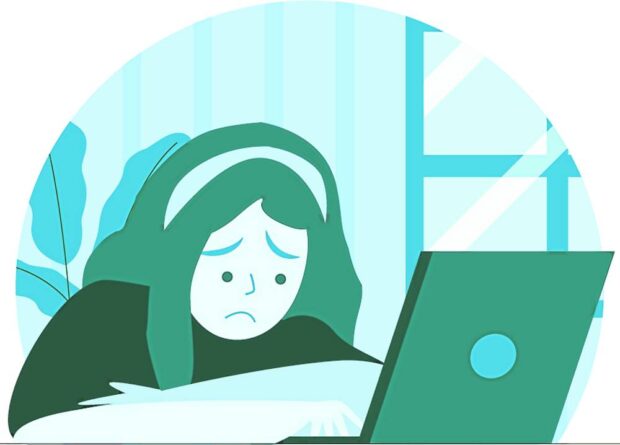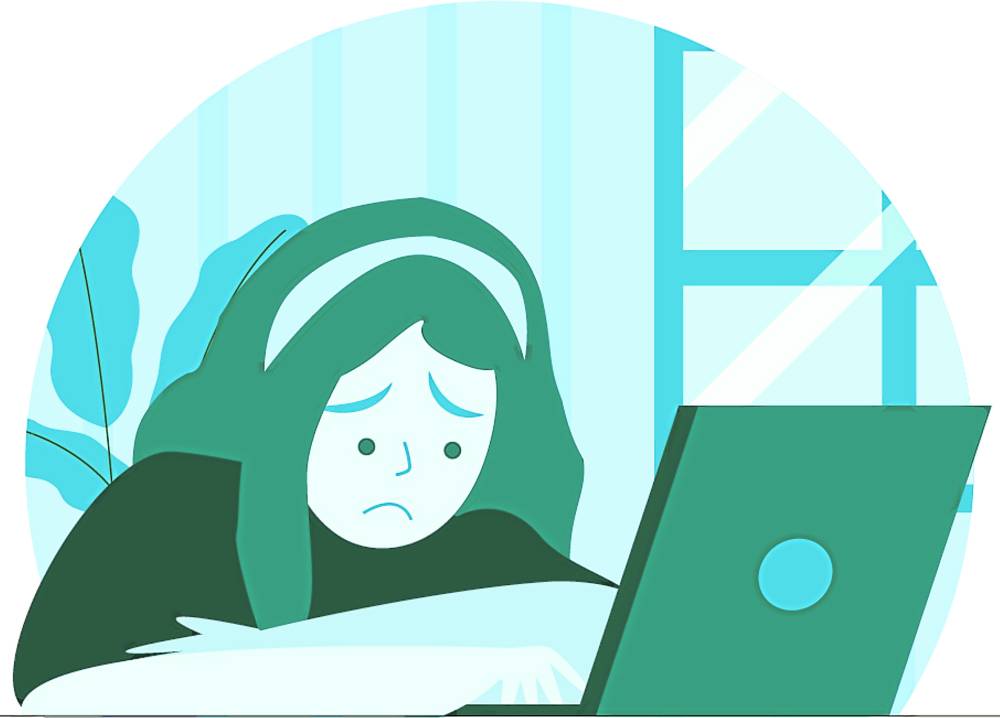
ILLUSTRATION BY RUTH MACAPAGAL
Some children overuse screens because latent difficulties are happening in their life.
Stress, worry or anxiety are common culprits. They may have problems with time management, planning and organizing, typical in Attention-Deficit/Hyperactivity Disorder (ADHD). Social or emotional disparities are seen in autism, while challenging behaviors usually occur in neurodivergent children. Having unique problems, such as learning difficulties due to dyslexia or dysgraphia, can lead to shame or low self-esteem.
Debbie Steinberg Kuntz, licensed marriage and family therapist at BrightandQuirky.com, recently held an online summit tackling family screen time struggles. She discussed lessons from a book by Robert Waldinger, M.D., and Marc Schulz, Ph.D., “The Good Life: Findings from the Harvard Study of Adult Development.” Running for 85 years, it’s the world’s longest scientific study of happiness.
“One thing we found in our research for the summit is that many parents are worried about their kids’ screen time, while kids and teens are not … Why the difference? Our hunch is that kids are not aware of what they’re missing off of screens. In real life, there are some essential components we need as protective factors for mental health, that we can’t get through screens,” said Kuntz.
The study revealed what we already know: the more connected to family, friends and community, the happier and physically healthier we’ll be.
Epidemic of loneliness
The quality of our relationships matters. Warm relationships safeguard our minds and bodies. In the book, Waldinger and Schulz said, “The shadow of loneliness and social disconnection haunts our modern ‘connected’ world.”
Author Annie Dillard said, “How we spend our days is how we spend our lives.” A common regret among study participants at the end of their lives was spending too much time worrying and too little acting in a way that made them feel alive.
Said Kuntz, “We’re living in an epidemic of loneliness. One in every three people of all ages report they often feel lonely. Of these, the loneliest group were 16- to 24-year-olds, 40 percent of whom reported feeling lonely ‘often’ and ‘very often.’”
She differentiated the loneliness between the kind of social contact you want and what you have.
Kuntz invited viewers to reflect: “Do you know how much time you spend with the people you like and love? Who are the friends and relatives who energize you, and who don’t you see enough? Are you spending time with the people you most care about?”
She also asked the audience to set aside time to think if there are relationships that would benefit both of them if they could spend more time together. Such untapped resources are usually yearning to be rekindled.
Parents can teach their kids how to make new friends by pursuing what they enjoy doing offline and are curious about so they can meet people with similar interests.
Kuntz emphasized the importance of measuring time spent with certain people, as the frequency and quality of our contact with them are two predictors of happiness. The book showed a diagram of how to map one’s social universe and the quality of relationships.
Walk the talk
She said that a key to motivating change is recognizing the difference between where we are and where we would like to be. Helping children define these two stages can create the momentum to help them take that first step.Ideally, parents can “walk the talk” by showing kids how they choose to invest their time and energy in their relationships. As Ralph Waldo Emerson said, “The only gift is a portion of thyself.”
Said Kuntz, “Time and attention are not something we can replenish. They are what our life is. When we offer our time and attention, we are not merely spending and paying. We are giving our lives.”
Our children can see how we spend our time and pay attention; time and attention are our most precious things. As philosopher Simone Weil said, “Attention is the rarest and purest form of generosity.”
Social media can enhance feelings of connectedness and belonging when used to sustain relationships with friends and family. The marginalized or those with niche interests can find support and validation. However, it is up to parents to fill the void of any “skin hunger,” a longing driven by the deprivation of human touch, that children may feel. Kuntz said that with the intense isolation brought about by the pandemic, social media was at least something, but it wasn’t enough.
“There is no substitute for IRL (in real life) relationships. The physical presence of another human cannot be duplicated by a machine. There is no substitute for being together,” she said.
Recommendations
Kuntz advised to use social media to communicate. Those who use it passively by reading and scrolling feel worse than those who engage actively by contacting others and commenting on posts. Those who compare themselves to others are usually depressed.
How you feel when on social media matters. Be aware of any mood shifts. When you unplug, do you feel restored or empty?
Ask loved ones, especially your kids, how they feel about your screen use. Are your online habits affecting them? Do they miss your full attention and presence?
Remember the study participants’ regrets at the end of their lives; how they wish they hadn’t wasted so much time, procrastinated, or worried. How they wish they’d spent more time with family.
So make a family bucket list of the people and things you most want to spend your attention on. Have everyone answer: what can I do for the world beyond me?









































